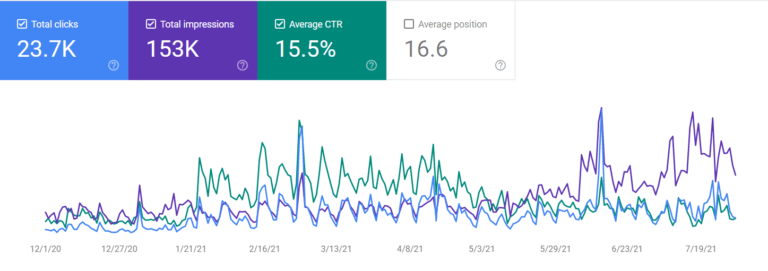
Google Ads is one of the most powerful ads platforms allows you to target potential clients who use different devices & different regions. Google Ads is always changing, and as a marketer, you must keep up with the latest features and upgrades. Keeping track of changes might assist you in optimising your marketing and staying ahead of the competition.
In this post, we will discuss the top five recent Google Ads updates that you should be aware of in order to enhance your performance and produce better results for your business. These upgrades will help you make the most of your advertising efforts, from Responsive Search Ads to Local Campaigns and Smart Bidding. So, let’s get started and see how these improvements will help your company.
Responsive Search Ads
Responsive search ads is the first of Google Ads updates we will talk about. Assume you have a product and want to create several advertisements to appeal to different clients. Responsive search ads act as a guide, creating several indications with various phrases and images that correspond to what users are searching for on Google.
More people will see your signage and desire to visit your lemonade stand as a result. As a result, you will be able to sell more products and earn more money.
Using various headlines and descriptions, advertisers may build a single ad that responds to diverse search terms.
This gives you greater freedom and the opportunity to test multiple headline and description combinations to identify the most successful ad copy. You may learn some Google Search Ads tips here.
Target CPA Bidding
Target CPA bidding is one of the Google Ads updates that changed the way of advertiser to set bidding. Advertisers may define a target cost per acquisition (CPA) and the platform will automatically change bids to meet that objective.
Target CPA bidding allows Google advertisers to specify a budget for how much they want to pay on each individual who clicks on their ad. Assume you own a lemonade stand and wish to sell your lemonade for $1 per cup. Target CPA bidding acts as a helper, informing Google how much you want to spend on each cup of lemonade sold. So, rather of paying for each ad click, you pay for each customer you get.

This method, you can ensure that you are not overspending on advertising and that you are making a profit from selling lemonade. Target CPA bidding provides for more efficient budget management and aids in more efficiently meeting the goal CPA.
Smart Bidding
Google Ads Smart Bidding is a collection of automated bid methods. In recent Google Ads updates, these tactics apply machine learning algorithms to maximize bids for each auction in real time, taking into consideration parameters such as the user’s device, location, time of day, and browser.
Smart Bidding allows you to specify your intended conversion action and then adjust bids based on data from your account and the wider web to get the highest conversion performance. Target CPA (Cost per Acquisition), Target ROAS (Return on Ad Spend), Maximize Conversions, and Target Impression Share are all smart bidding methods.
Target CPA – You may use the target CPA bid strategy to establish a target cost per acquisition (CPA) for your campaigns, and the system will automatically change your bids to try to attain that target CPA.
ROAS – You can utilize the Goal ROAS bid strategy to establish a target return on ad spend (ROAS) for your campaigns, and the system will automatically change your bids to aim to attain that target ROAS.
Maximize Conversions – The Maximize Conversions bid strategy allows you to select a goal number of conversions, and the system will automatically change your bids to try to meet that amount.
Target Impression Share – You may use the Target Impression Share bid strategy to establish a target percentage of impressions for your campaigns, and the system will automatically change your bids to try to attain that proportion of impressions.
Smart Bidding is a strong tool that may assist you in optimising your bids for improved conversion performance and increased return on ad spend. It is vital to note that, depending on the campaign’s aims and target audience, one method may outperform the other.
Local Campaigns
Local campaigns are similar to having a map that reveals where your shop is so customers can quickly discover it. Assume you own a shoe business and want customers to come in and buy shoes from you.
Local campaigns act as a guide, creating a map and displaying it to consumers seeking for shoe businesses nearby. This way, more people will be aware of your location and will be able to purchase shoes from you.

This feature allows local businesses to create ads that appear in Google Maps and Google search results, making it easier for customers to find their business and get directions. It allows for more targeted advertising for local businesses and better reach for customers.
Ads Data Hub
Google revamped its Ads Data Hub, which lets marketers to securely and privately access data from Google Ads and other Google services. Additionally, the upgrade enables marketers to conduct more advanced data analysis and acquire fresh insights into their campaigns.
This enables improved ad optimization and a better understanding of client behaviour.
Conclusion
To recap, Google Ads is a dynamic platform that is always changing to help businesses more efficiently reach their target audience. Responsive Search Ads, Target CPA Bidding, Smart Bidding, Local Campaigns, and Ads Data Hub are the top five latest Google Ads updates highlighted in this post.
These changes give marketers with greater flexibility, efficiency, and better information, allowing them to optimise their campaigns and achieve better outcomes. Advertisers should guarantee that they are getting the most of their advertising efforts and staying ahead of the competition by staying up to speed with the newest features and changes.
It’s good to keep track of these changes and experiment with them to see how they may help your business.






